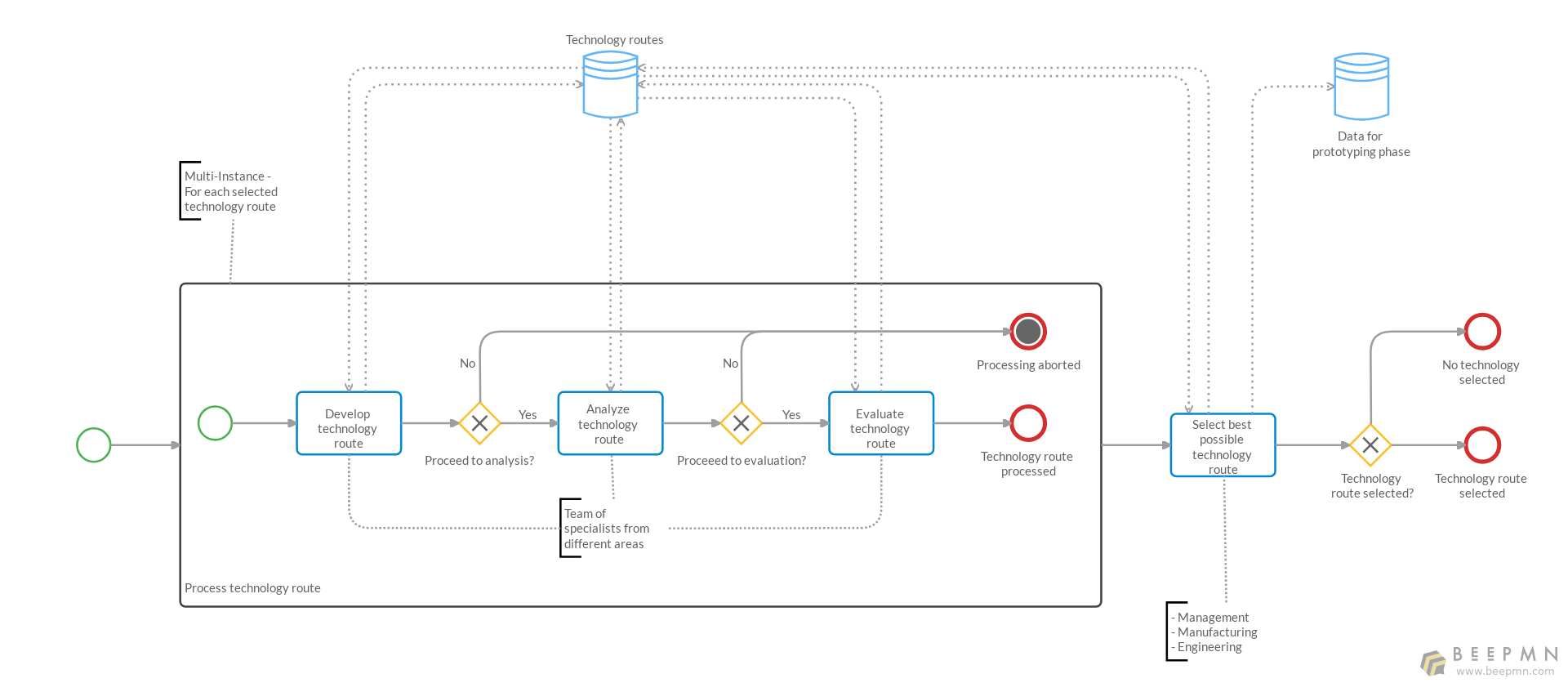We rebranded. Cardanit is the new BeePMN.
Keep a lookout for our evolved brand on our new website. Here’s to the next exciting years ahead!
BeePMN Use Case for COMPOSELECTOR
We’ve already told you how BeePMN is playing a major role within the COMPOSELECTOR project. The business process underlying the industrial partners' application cases have been deeply analyzed to discover the business decisions that the Business Decision Support System (BDSS) will support once implemented.
For each application case, BPMN models have been defined using BeePMN and adopting the hierarchical top-down style described in BPMN Method and Style by Bruce Silver.
The DOW application case intends to apply the BDSS to determine the optimum decision on material and manufacturing process selection of a composite leaf spring at conceptual design stage. Composite leaf springs serve as the elastic elements and guiding mechanism of the suspension in automotive design. The technical novelty in this application is the use of carbon reinforced polymers in parallel with glass-reinforced polymers, which is the standard work piece material for this type of application.
The leaf spring conceptual design stage is the first phase of the two-phases process that starts from an Original Equipment Manufacturer (OEM) need for a part or system with a new set of requirements, and ends with the release of a qualified technology/economic package that the OEM can then move into specific vehicle programs. The second phase of this process is the prototyping and testing of the technology route selected in the first phase. The conceptual design stage process starts when requirements for a new part or system are received, and ends when a technology route is selected, triggering the prototype development. Three main activities, represented by sub-processes in the top-level diagram, compose the conceptual design stage process. The process is triggered by a message representing the requirements for a new part or system. Once a technology route is selected the process ends and triggers the prototype development. Each sub-process could end in state causing the entire process to abort. To model the main activities internal logic, each sub-process has been expanded in a separate child-level diagram.
Modeling the business process underlying the DOW application case we identified the main actors involved and the activities and steps requiring business decisions. This information will be used in the next phases of the project to create the BPMN models the BDSS will run to support the DOW application case.

